IO Measurements
 The group has two IO LIF instruments, one deployed by the ground based team (led by Lisa Whalley) and one by the aircraft team (led by Trevor Ingham). The instruments have been deployed on the RHaMBLe-Roscoff campaign (2006), RHaMBLe-Cape Verde ship campaign (2007), an instrument development and intercomparison project at Mace Head, Ireland (2007), and on the SHIVA ship campaign (2012).
The group has two IO LIF instruments, one deployed by the ground based team (led by Lisa Whalley) and one by the aircraft team (led by Trevor Ingham). The instruments have been deployed on the RHaMBLe-Roscoff campaign (2006), RHaMBLe-Cape Verde ship campaign (2007), an instrument development and intercomparison project at Mace Head, Ireland (2007), and on the SHIVA ship campaign (2012).
SHIVA, 2011
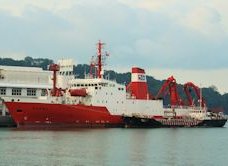
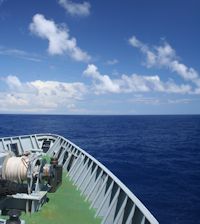
The Stratospheric Ozone: Halogen Impacts in a Varying Atmosphere (SHIVA) project took place in Autumn 2011 and involved a scientific cruise from Singapore to Manila onboard the RV Sonne. The aircraft IO instrument, reconfigured for use onboard the ship, was used to make measurements of the IO radical alongside observations of other short lived iodine species to understand the influence of emissions of halogen molecules from the oceans on the chemistry of the atmosphere.
This part of the world was chosen as emissions from the ocean surface can be rapidly uplifted (for example by convective storms) to very high altitudes and enter the stratosphere. Other partners made measurements of a range of molecules from a research aircraft in the same region. The data recorded from the cruise will help us to understand the chemical mechanisms which release iodinated species from the very upper layers of the ocean, or from aerosols generated by ocean waves, which are currently not well understood. Once in the atmosphere, these species can be broken down by sunlight, generating radicals which can react with ozone (an important greenhouse gas) in the immediate vicinity, and on a wider scale via vertical transport of longer-lived halogen species which can enter the stratosphere, and impact stratospheric ozone, which protects us from ultraviolet radiation. Further information on the project can be found on shiva.iup.uni-heidelberg.de.
Mace Head, 2007
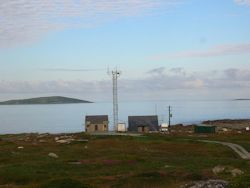
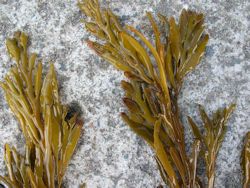
A reactive halogen species instrument development and intercomparison project took place at Mace Head Atmospheric Research Station, Ireland, in August 2007. The project aimed to test newly developed iodine species field instruments. This location was chosen due to the reliable sources of halogen species.
The portable IO LIF instrument was operated for 13 days with IO observed on all days. Maximum mixing ratios of 33 pptV were observed at daytime, with a strong anticorrelation with tidal height.
A novel Resonance-Fluorescence Instrument for detection of iodine species was deployed for the first time during this project. The instrument was developed by Catherine Bale and William Bloss (now at the University of Birmingham).
References
Bale, C.S.E.; Ingham, T.; Commane, R.; Heard, D.E.; Bloss, W.J. Novel measurements of atmospheric iodine species by resonance fluorescence, Journal of Atmospheric Chemistry, 60 (1), 51-70, 2008
RHaMBLe: Cape Verde ship campaign, 2007
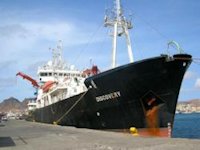
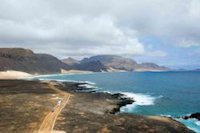
The portable IO LIF instrument was deployed on the RRS discovery as part of the Reactive Halogens in the Marine Boundary Layer (RHaMBLe) Cape Verde ship campaign in May and June 2007. The aim of the cruise was to quantify reactive halogen species above the open ocean. The ship travelled from Cape Verde through the Mauritanian upwelling and the Canary Islands back to the UK. The instrument was successfully operated for over 400 miles, including a passage through the Canary Islands. Mean IO concentrations of 1.2 pptV were observed during the day.
References
Commane, R.; Seitz, K.; Bale, C.S.E.; Bloss, W.J.; Buxmann, J.; Ingham, T.; Platt, U.; Pöhler, D.; Heard, D.E. Iodine monoxide at a clean marine coastal site: observations of high frequency variations and inhomogeneous distributions, Atmospheric Chemistry and Physics, 11, 6721-6733, 2011
RHaMBLe: Roscoff ground-based campaign, 2006
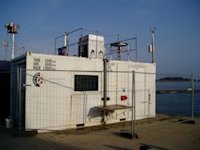
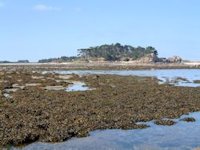

The RHaMBLe-Roscoff field campaign took place in August-September 2006 in Roscoff, Brittany, NW France (48.62 N, 4.55 W). The site was partly chosen because Roscoff has one of the largest tidal ranges in the world. At low tide, macro algae were exposed which emit iodine and halocabons. The air masses encountered were predominantly North Atlantic in origin, with high NOx concentrations (1 - 5 ppbV) due to the proximity of the field site to the town. The ground based LIF IO instrument was deployed for one month. The results obtained represent the first measurements of ambient IO by LIF, providing an in situ, point source and high temporal resolution measurement.
The LIF IO instrument was located on the coastal edge, adjacent to the town. Measurements were made on 23 days, with IO detected above the 150 s limit of detection on 15 of those days. The maximum daytime IO concentration was 30.0 pptV (10 s average), which correlated with the tidal minimum. IO concentrations were found to correlate with tidal height, solar irradiation, wind speed and wind direction. A maximum of 2 pptV (60 minute average) of IO was detected at night, indicating a non-photolytic source of IO. These results show that IO is present in a polluted environment away from the halogen source, indicating some degree of recycling of IO.
References
Whalley, L. K., K. L. Furneaux, T. Gravestock, H. M. Atkinson, C. S. E. Bale, T. Ingham, W. J. Bloss, and D. E. Heard, Detection of iodine monoxide radicals in the marine boundary layer using laser induced fluorescence spectroscopy, Journal of Atmospheric Chemistry, 58 (1), 19-39, 2007
Furneaux, K.L.; Whalley, L.K.; Heard, D.E.; Atkinson, H.M.; Bloss, W.J.; Flynn, M.J.; Gallagher, M.W.; Ingham, T.; Kramer, L.; Lee, J.D.; Leigh, R.; McFiggans, G.B.; Mahajan, A.S.; Monks, P.S.; Oetjen, H.; Plane, J.M.C.; Whitehead, J.D. Measurements of iodine monoxide at a semi polluted coastal location, Atmospheric Chemistry and Physics, 10, 3645-366, 2010
